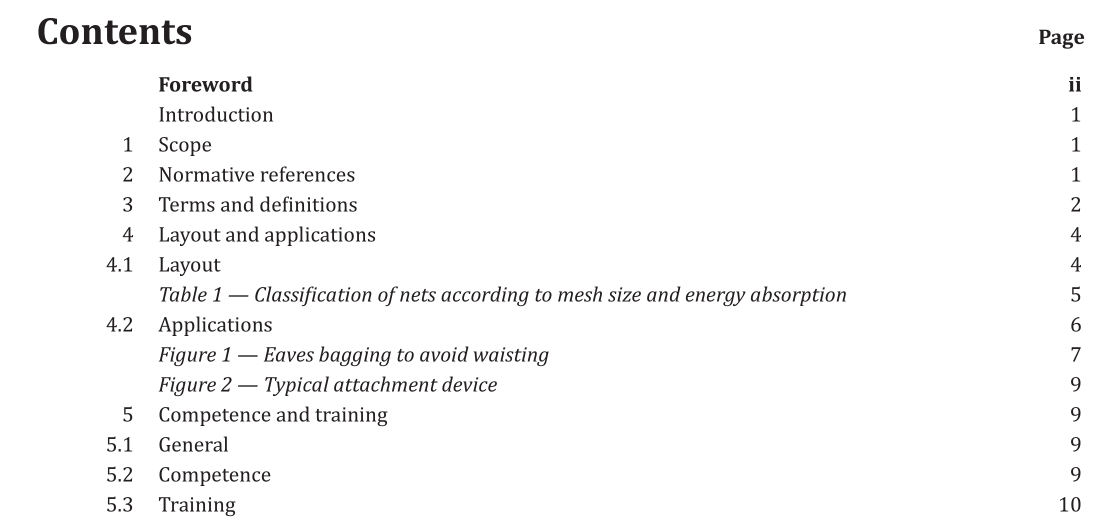BS 8411:2019 pdf download.Safety nets on construction sites and other works – Code of practice
1 Scope
This British Standard provides recommendations on the safe use, installation and effective maintenance of safety nets on construction sites and other works where there is a risk of fall. It is intended for use by designers, engineers, safety net installers, end users and authorities having jurisdiction, for example the Health and Safety Executive (HSE]. It is applicable to safety nets that conform to BS EN 1263-1:2014 and that are installed within the positioning limits given in BS EN 1263-2:2014. However, as these standards give specific minimum size limits, this British Standard also gives guidance on how to assess the reliability of safety nets outside these limits. NOTE Advice is given in Annex A. This British Standard covers safety net systems“S”,“T” and“U” as given in BS EN 1263-2:2014, Clause 5, Clause 6 and Clause 7 respectively. It does not cover system“V” (Clause 8). This British Standard does not cover tensioned access platform nets, which are intended for persons to stand on either for access, egress or work.
2 Normative references
The following documents are referred to in the text in such a way that some or all of their content constitutes provisions of this document.1 For dated references, only the edition cited applies. For undated references, the latest edition of the referenced document (including any amendments) applies.
BS 5975, Code of practice for temporary works procedures and the permissible stress design of falsework
BS 7883, Code of practice for the design, selection, installation, use and maintenance of anchor devices conforming to BS EN 795
BS EN 362, Personal protective equipment against falls from a height一Connectors
BS EN 795, Personal fall protection equipment – – Anchor devices
BS EN 1263-1:2014, Temporary works equipment一Safety nets – Part 1: Safety requirements,test methods
4 Layout and applications
4.1 Layout
4.1.1 General
Safety nets may be used by themselves or in combination with other fall arrest and fall protection systems to mitigate the consequences of a fall at openings or edges, or where working over or near fragile materials. Safety nets of various sizes may be linked together (see Z.3.3) so as to span large areas. Nets may be used in the form of a protection fan (e.g. BS EN 1263-1:2014, Figure 2), enhanced where required by placing debris netting over the safety nets to prevent smaller debris from falling through the net. The debris netting should be able to withstand the type of material likely to fall in to it, and gaps should be avoided at edges and around service ducts so that debris is not permitted to pass through. In order to minimize the risk of injury to those who might fall into safety nets, nets should be capable of deforming and deflecting sufficiently under impact to largely absorb the energy of the falling person; this deformation and deflection being possible through the net cords slipping and tightening (knotted nets) or net meshes (knotless nets) deforming or stretching through plastic deformation. Tie ropes and border ropes might also stretch under load, so absorbing some of the falling energy. Safety nets should have sufficient clearance below them in order to allow for this deflection while ensuring that the person falling does not strike any object.
BS 8411:2019 pdf download
